
The Enchanting Heart of the Southwest
Discover Santa Fe, where rich cultural heritage meets stunning natural beauty, creating an enchanting and unforgettable destination in the heart of New Mexico.
Santa Fe, the capital of New Mexico, is a city rich in history, culture, and natural beauty. With its unique blend of Native American, Spanish, and Anglo cultures, Santa Fe offers a vibrant and diverse experience for visitors. The city's adobe architecture, with its distinct earth-toned buildings, creates a picturesque setting that feels both timeless and inviting. Walking through the narrow streets of the historic downtown area, you'll find an array of art galleries, museums, and boutiques that showcase the region's artistic heritage. Santa Fe is known for its thriving arts scene, and it is home to many world-class museums, including the Georgia O'Keeffe Museum and the Museum of International Folk Art. The city's numerous art galleries feature works by local and international artists, making it a haven for art lovers. Additionally, Santa Fe hosts several annual events, such as the Santa Fe Indian Market and the Santa Fe Opera, which draw visitors from around the globe. Beyond its cultural offerings, Santa Fe is surrounded by natural beauty. The nearby Sangre de Cristo Mountains provide ample opportunities for outdoor activities, such as hiking, skiing, and horseback riding. The city's high desert climate ensures that visitors can enjoy sunny days and cool evenings throughout much of the year. Whether you're exploring the historic sites, savoring the local cuisine, or simply soaking in the stunning landscapes, Santa Fe promises an unforgettable experience.
Local tips in Sante Fe
- Visit the historic Plaza early to avoid crowds and fully enjoy its charm.
- Take a guided tour to learn about the city's rich history and cultural significance.
- Explore Canyon Road for a unique shopping experience with its many art galleries and studios.
- Don't miss the local cuisine—try traditional New Mexican dishes like green chile stew and sopapillas.
- If visiting during the summer, bring a hat and sunscreen to protect yourself from the high desert sun.
- Consider renting a car to explore the beautiful surrounding areas and nearby attractions.
The Enchanting Heart of the Southwest
Santa Fe, the capital of New Mexico, is a city rich in history, culture, and natural beauty. With its unique blend of Native American, Spanish, and Anglo cultures, Santa Fe offers a vibrant and diverse experience for visitors. The city's adobe architecture, with its distinct earth-toned buildings, creates a picturesque setting that feels both timeless and inviting. Walking through the narrow streets of the historic downtown area, you'll find an array of art galleries, museums, and boutiques that showcase the region's artistic heritage. Santa Fe is known for its thriving arts scene, and it is home to many world-class museums, including the Georgia O'Keeffe Museum and the Museum of International Folk Art. The city's numerous art galleries feature works by local and international artists, making it a haven for art lovers. Additionally, Santa Fe hosts several annual events, such as the Santa Fe Indian Market and the Santa Fe Opera, which draw visitors from around the globe. Beyond its cultural offerings, Santa Fe is surrounded by natural beauty. The nearby Sangre de Cristo Mountains provide ample opportunities for outdoor activities, such as hiking, skiing, and horseback riding. The city's high desert climate ensures that visitors can enjoy sunny days and cool evenings throughout much of the year. Whether you're exploring the historic sites, savoring the local cuisine, or simply soaking in the stunning landscapes, Santa Fe promises an unforgettable experience.
When is the best time to go to Sante Fe?
Iconic landmarks you can’t miss
Loretto Chapel
Experience the architectural wonder and spiritual serenity of Loretto Chapel in Santa Fe, a unique historical landmark with a stunning spiral staircase.
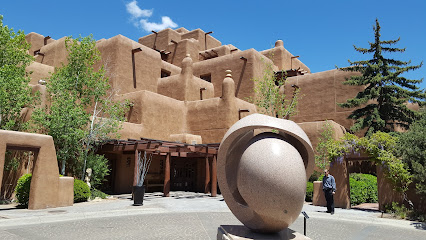
Georgia O'Keeffe Museum
Discover the beauty and creativity of Georgia O'Keeffe at her dedicated museum in Santa Fe, showcasing her iconic art and inspiration.

La Fonda on the Plaza
Discover La Fonda on the Plaza, a historic hotel in Santa Fe blending Southwestern charm with luxury and cultural richness for an unforgettable stay.
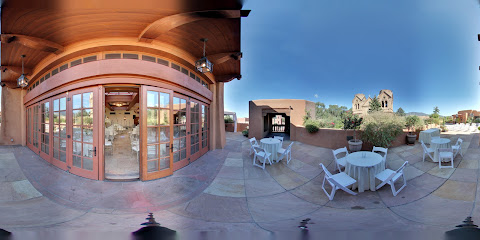
The Cathedral Basilica of St. Francis of Assisi
Experience the architectural beauty and spiritual serenity of the Cathedral Basilica of St. Francis of Assisi, a must-see landmark in Santa Fe, New Mexico.
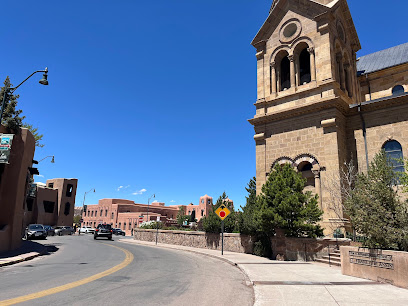
El Rancho de las Golondrinas
Discover the rich history and vibrant culture of New Mexico at El Rancho de las Golondrinas, a living history museum showcasing authentic traditions.

Cross of the Martyrs
Discover the Cross of the Martyrs in Santa Fe, a beautiful park offering stunning views and rich historical significance for every traveler.
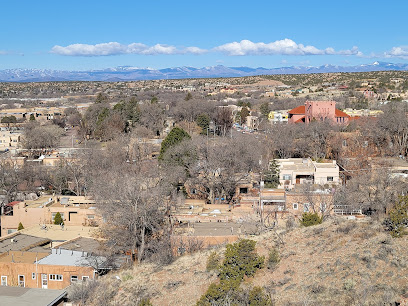
San Miguel Chapel
Explore San Miguel Chapel, one of the oldest churches in the U.S., a serene landmark reflecting Santa Fe's rich spiritual and cultural heritage.
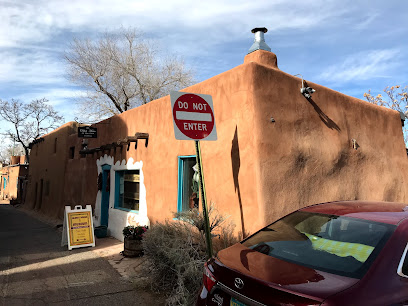
New Mexico Museum of Art on the Plaza
Discover the artistic treasures of the Southwest at the New Mexico Museum of Art, a cultural landmark in Santa Fe showcasing American art.

Santa Fe Railyard Park
Explore the vibrant Santa Fe Railyard Park, a cultural oasis filled with art, gardens, and community events in the heart of New Mexico.

Sena Plaza
Explore Sena Plaza in Santa Fe: A vibrant hub for shopping, art, and culture nestled in the heart of New Mexico.
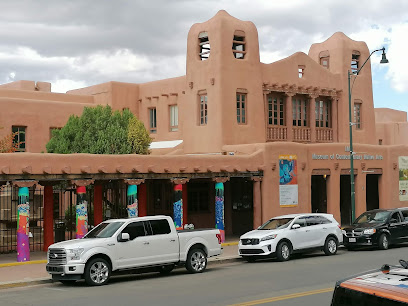
Cathedral Park
Discover the enchanting beauty of Cathedral Park, where history, nature, and tranquility converge in the heart of Santa Fe, New Mexico.
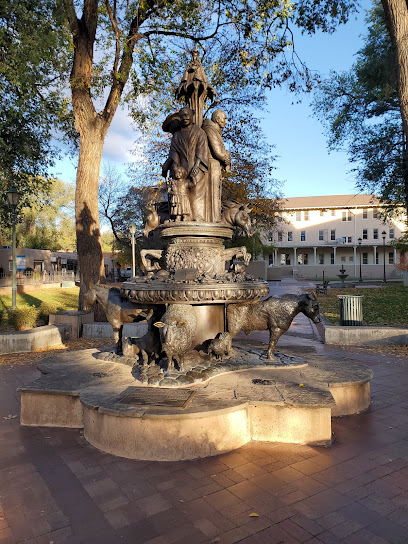
Oldest House Museum
Explore the Oldest House Museum in Santa Fe, a historical gem that showcases the unique architectural and cultural heritage of America’s oldest city.
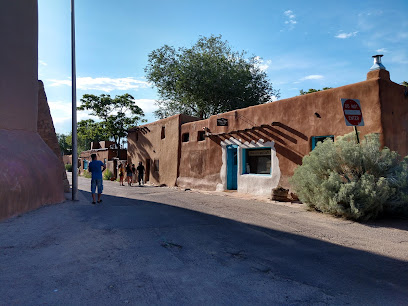
History in Santa Fe Tour - Santa Fe Revisited
Discover the captivating history of Santa Fe through immersive tours that reveal the rich tapestry of culture and heritage in this unique city.
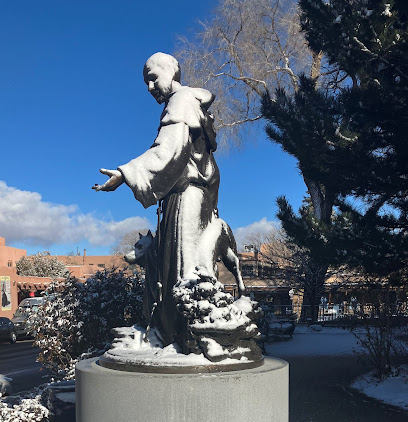
Inn of the Turquoise Bear
Unwind in a charming bed and breakfast in Santa Fe, blending Southwestern charm with modern comfort, and explore the rich cultural heritage of New Mexico.
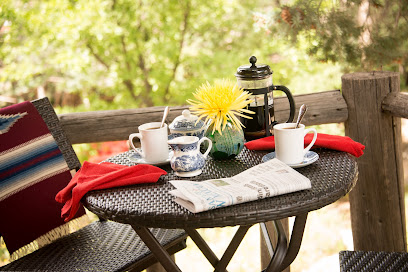
IAIA Museum of Contemporary Native Arts (MoCNA)
Discover contemporary Native American art at IAIA Museum of Contemporary Native Arts, a must-visit in Santa Fe, New Mexico.
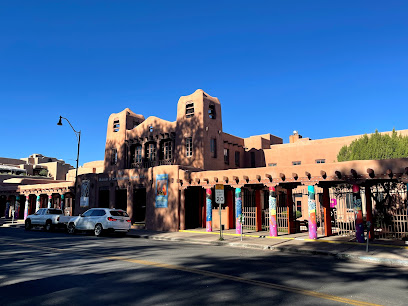
Unmissable attractions to see
Meow Wolf Santa Fe's House of Eternal Return
Experience the imagination at Meow Wolf Santa Fe, where art, technology, and storytelling merge into a mesmerizing adventure for all ages.

Meow Wolf Santa Fe
Experience the mesmerizing world of Meow Wolf Santa Fe, an immersive art attraction that combines creativity, interactivity, and storytelling in one captivating destination.
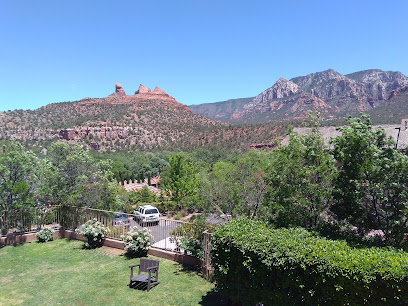
Santa Fe Plaza
Explore Santa Fe Plaza, a historic landmark bursting with art, culture, and New Mexican charm in the heart of Santa Fe, New Mexico.
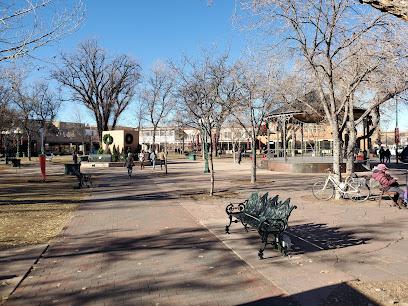
Santa Fe Plaza
Experience the vibrant culture and rich history of Santa Fe at the renowned Santa Fe Plaza, a must-visit destination for every traveler.
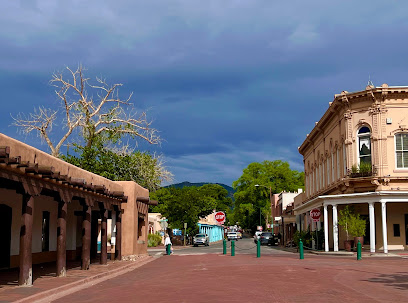
Loretto Chapel Museum
Explore the Loretto Chapel Museum in Santa Fe, NM - a stunning historical gem with a miraculous staircase and rich cultural heritage.
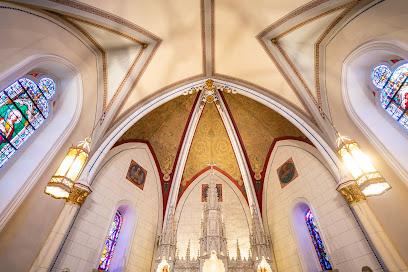
Santuario de Chimayo
Discover the spiritual and historical significance of Santuario de Chimayo, a serene sanctuary in New Mexico known for its miraculous healing dirt.
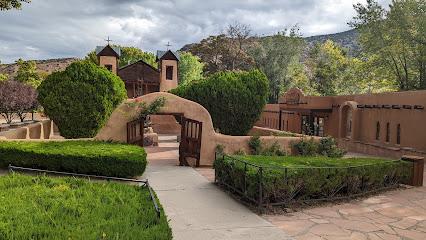
Georgia O'Keeffe Museum
Immerse yourself in the vibrant art and life of Georgia O'Keeffe at Santa Fe's premier museum, celebrating the essence of American modernism.

Bandelier National Monument
Explore Bandelier National Monument: A stunning blend of ancient history and natural beauty in New Mexico.
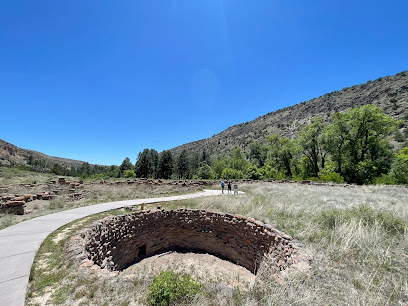
Georgia O'Keeffe Museum
Explore the Georgia O'Keeffe Museum in Santa Fe—home to the iconic artist's masterpieces and a celebration of modern American art.
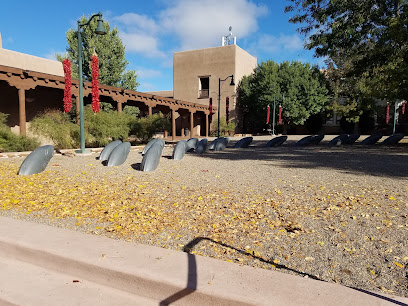
The Mine Shaft Tavern & Cantina
Experience the authentic flavors of New Mexico at The Mine Shaft Tavern & Cantina, where local culture meets delicious cuisine in a welcoming atmosphere.
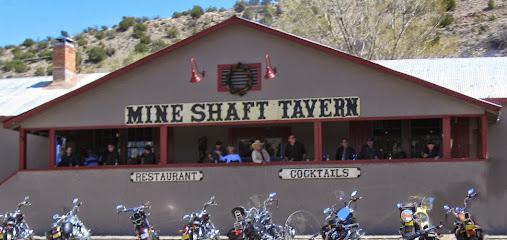
The Cathedral Basilica of St. Francis of Assisi
Visit the Cathedral Basilica of St. Francis of Assisi in Santa Fe, a stunning architectural marvel that embodies the spiritual essence of New Mexico.

Santa Fe Farmers Market
Explore the Santa Fe Farmers Market: a vibrant hub of local produce, artisanal goods, and cultural experiences in the heart of New Mexico.
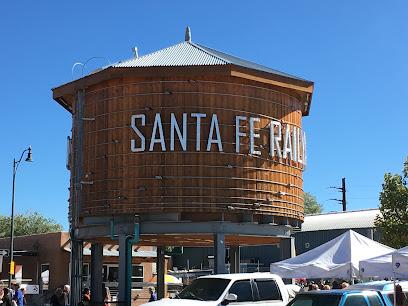
The Cathedral Basilica of St. Francis of Assisi
Discover the architectural beauty and rich history of The Cathedral Basilica of St. Francis of Assisi in Santa Fe, New Mexico.
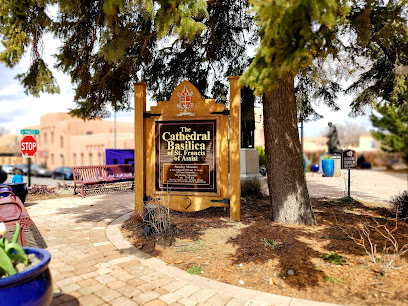
Santa Fe Farmers Market
Discover the essence of Santa Fe at the Farmers Market, where local flavors, artisan crafts, and vibrant culture come together in a unique shopping experience.
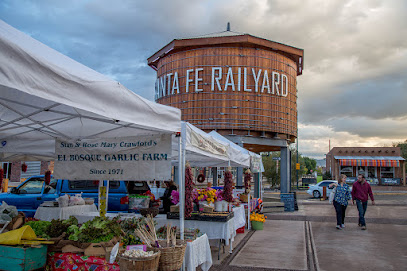
Pecos National Historical Park
Explore the rich history and breathtaking landscapes of Pecos National Historical Park, where culture and nature come together in New Mexico.
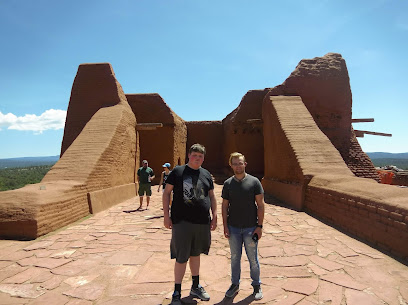
Essential places to dine
Tomasita's Santa Fe New Mexican Restaurant
Discover authentic New Mexican cuisine at Tomasita's in Santa Fe—where tradition meets flavor in every dish.
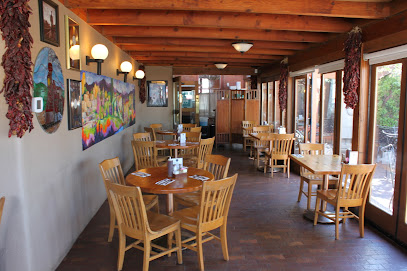
The Pantry
Experience the best of American comfort food with Latin flair at The Pantry in Santa Fe—where every meal feels like home.

La Choza Restaurant
Discover authentic Mexican flavors at La Choza Restaurant in Santa Fe - where every meal is a cultural celebration.
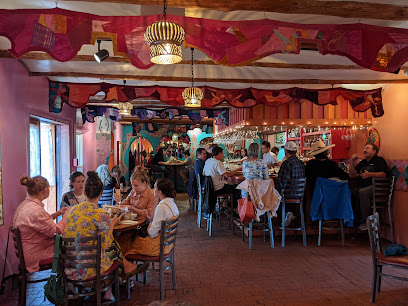
Cowgirl
Discover the rich flavors of American barbecue at Cowgirl in Santa Fe - where every bite tells a story.

The Ranch House
Discover the essence of American cuisine at The Ranch House in Santa Fe - where flavor meets tradition in a cozy setting.
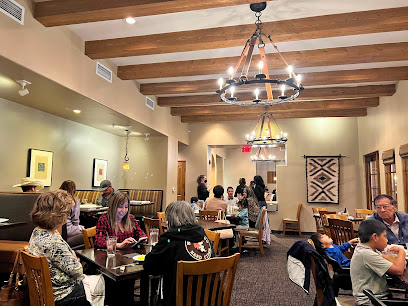
Maria's New Mexican Kitchen
Experience authentic New Mexican cuisine at Maria's New Mexican Kitchen in Santa Fe – where tradition meets flavor.
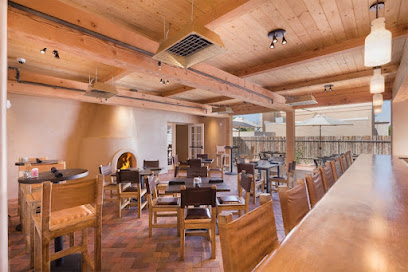
Plaza Cafe Downtown
Experience authentic Southwestern American cuisine at Plaza Cafe Downtown in Santa Fe - a cozy diner serving delicious flavors and local charm.
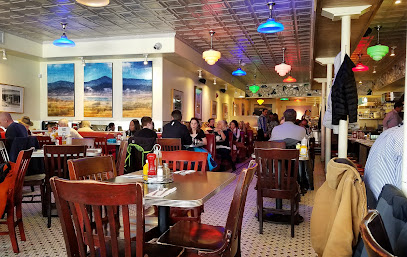
The Shed
Discover authentic New Mexican flavors at The Shed in Santa Fe - where tradition meets taste in every delicious bite.
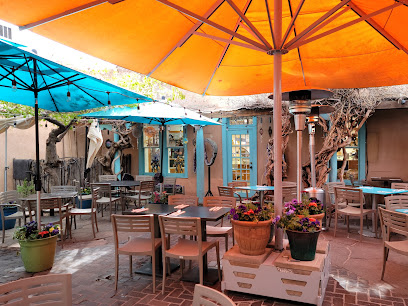
Coyote Cafe & Rooftop Cantina
Discover the vibrant flavors of Southwestern cuisine at Coyote Cafe & Rooftop Cantina in Santa Fe, NM – where every meal is a feast for the senses.
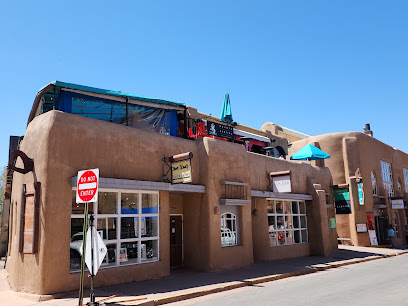
Cafe Pasqual's
Experience the vibrant flavors of Southwestern cuisine at Café Pasqual's in Santa Fe, where every meal tells a story.
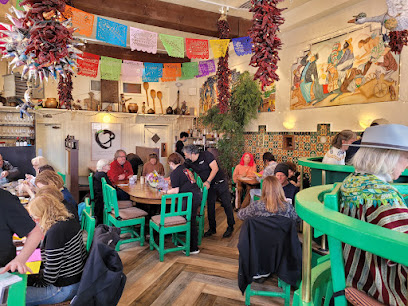
Tia Sophia's
Experience authentic New Mexican flavors at Tia Sophia's - a family-friendly restaurant in the heart of Santa Fe.
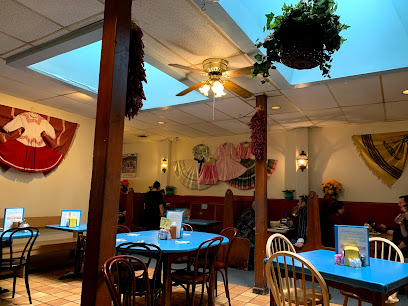
Clafoutis
Indulge in authentic French cuisine at Clafoutis—Santa Fe's beloved bakery and breakfast restaurant serving delightful pastries and hearty meals.
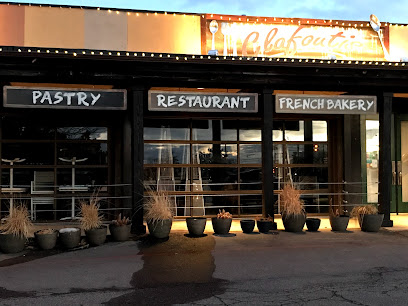
Jambo Cafe
Experience the vibrant fusion of African and Caribbean flavors at Jambo Cafe in Santa Fe - a culinary journey like no other.
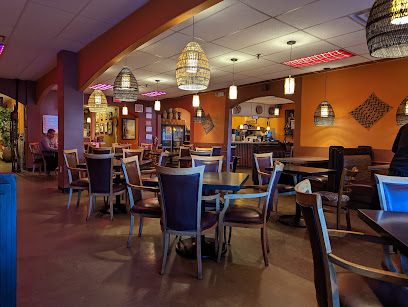
La Plazuela At La Fonda
Experience culinary artistry at La Plazuela At La Fonda – where traditional Mexican flavors meet modern fusion cuisine in Santa Fe's historic heart.
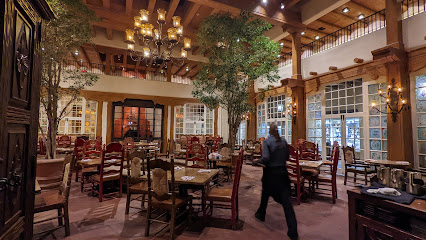
La Boca
Discover La Boca in Santa Fe: A premier tapas bar serving exquisite dishes inspired by Spanish culinary traditions with a New Mexican twist.
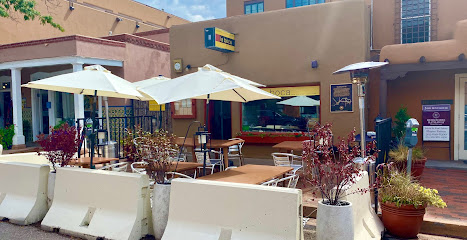
Markets, malls and hidden boutiques
Tin-Nee-Ann Trading Co
Explore Tin-Nee-Ann Trading Co, a unique gift shop in Santa Fe, NM, featuring Native American art, jewelry, and handcrafted treasures.
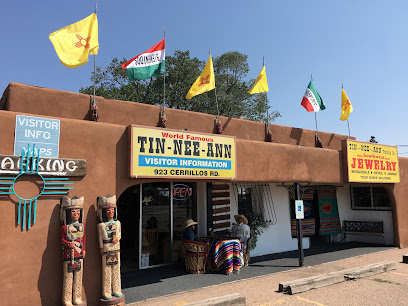
Doodlet's
Discover a treasure trove of unique gifts at Doodlet's in Santa Fe, where local artistry meets delightful shopping.
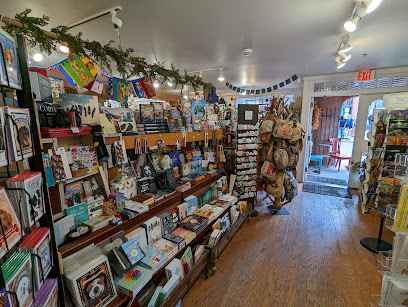
The Shop A Christmas Store
Explore the magic of Christmas at The Shop A Christmas Store, offering unique ornaments and festive décor in the heart of Santa Fe.
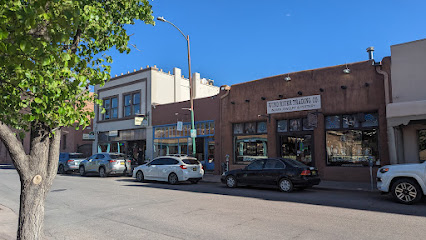
The Oldest House Indian Shop
Discover the timeless artistry and cultural heritage at The Oldest House Indian Shop in Santa Fe, NM, a unique historical landmark offering exquisite Native American crafts.
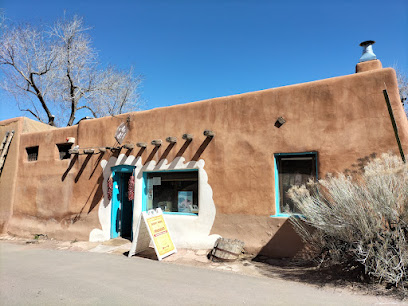
Gift & Gourmet
Explore the charm of Gift & Gourmet in Santa Fe, a unique gift shop offering artisan crafts and gourmet delights reflecting New Mexico's rich culture.
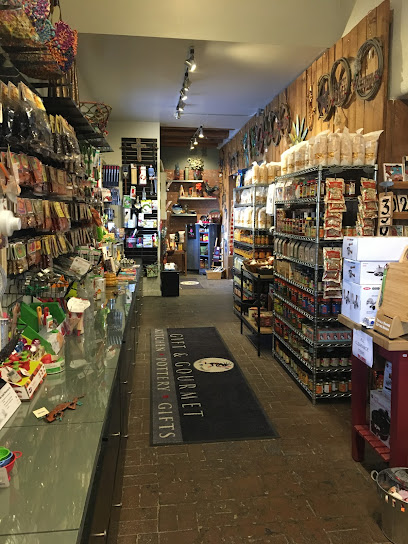
The Chile Shop
Explore the authentic taste of New Mexico at The Chile Shop, your one-stop gourmet grocery and gift shop in Santa Fe.
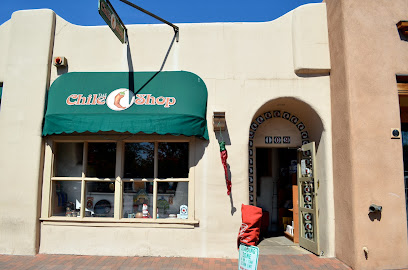
Original Trading Post
Discover authentic Native American artistry at the Original Trading Post in Santa Fe, NM, where culture and craftsmanship meet in a vibrant shopping experience.
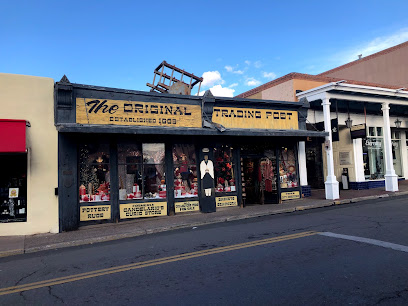
Santa Fe Dry Goods, Workshop & Wild Life
Explore Santa Fe Dry Goods for unique clothing, jewelry, and artisan accessories that embody the spirit of New Mexico's rich culture and artistic heritage.
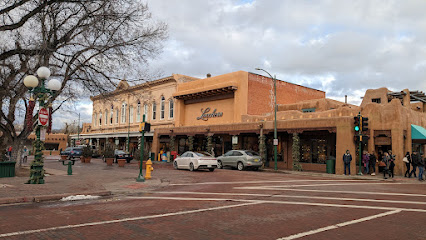
El Nicho
Discover unique handcrafted treasures at El Nicho, a charming gift shop in Santa Fe celebrating local artistry and culture.
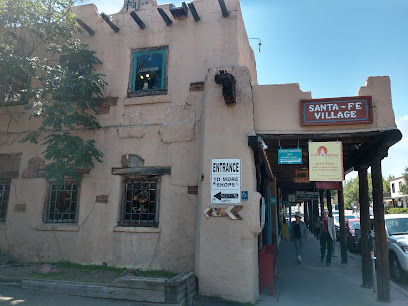
Yippee Yi Yo
Explore the enchanting gift shop Yippee Yi Yo in Santa Fe, offering unique local crafts, art, and treasures that capture the spirit of New Mexico.
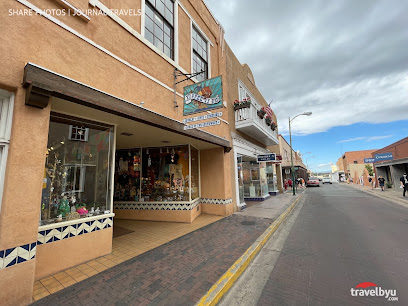
Sunwest on the Plaza
Explore the heart of Santa Fe at Sunwest on the Plaza, a gift shop filled with authentic Native American arts, pottery, and unique treasures.
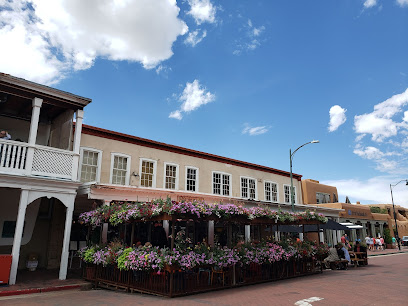
Santa Fe Hemp
Explore a unique blend of sustainability and local artistry at Santa Fe Hemp, a charming gift shop in the heart of Santa Fe, New Mexico.

Sun Country Traders
Explore Authentic Native American Crafts and Art at Sun Country Traders in Santa Fe, NM - A Cultural Shopping Experience.
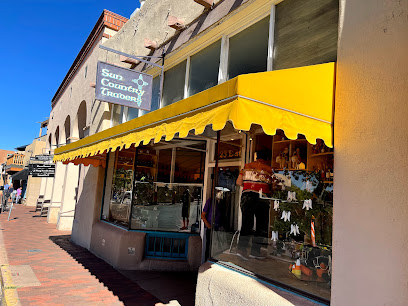
Kokopelli Gallery
Explore Kokopelli Gallery in Santa Fe for unique gifts and local art that embody the spirit of the Southwest.
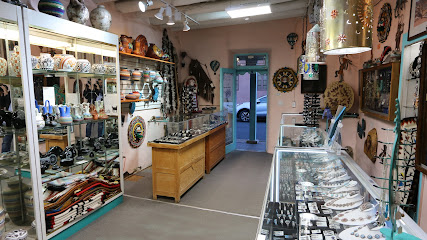
Santa Fe VINTAGE OUTPOST
Uncover unique vintage treasures at Santa Fe VINTAGE OUTPOST, the charming clothing store in Santa Fe, NM, perfect for fashion lovers and treasure hunters.
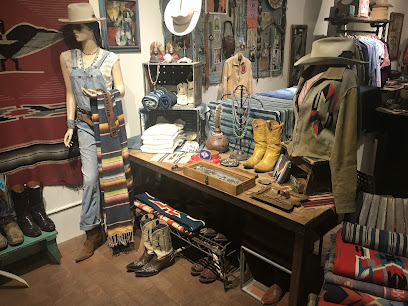
Essential bars & hidden hideouts
Coyote Cafe & Rooftop Cantina
Experience the vibrant flavors of Southwestern cuisine with stunning rooftop views at Coyote Cafe & Rooftop Cantina in Santa Fe.
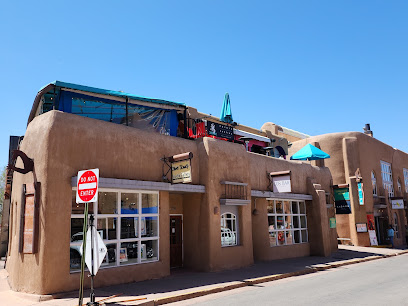
BOXCAR
Experience the best of Santa Fe at BOXCAR, where great food, craft brews, and live music unite for an unforgettable outing.
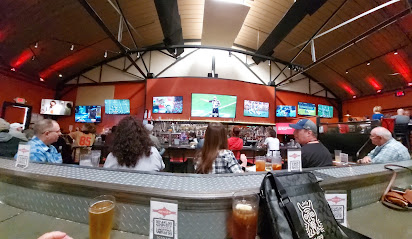
Thunderbird Bar & Grill
Experience the rich flavors of New Mexico at Thunderbird Bar & Grill, a culinary gem in the heart of Santa Fe, perfect for your next dining adventure.
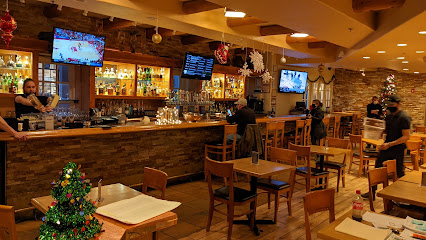
La Boca
Discover La Boca in Santa Fe, NM, where exquisite tapas meet a vibrant atmosphere and an extensive wine selection for a memorable dining experience.
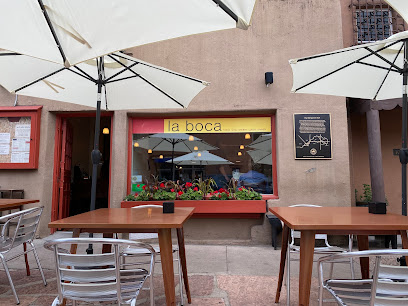
Santacafé
Experience the culinary excellence of Santacafé in Santa Fe, blending American flavors with a fine dining atmosphere in a charming setting.
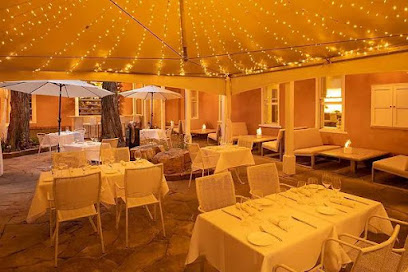
The Matador
Discover the vibrant nightlife of Santa Fe at The Matador, where eclectic drinks and lively atmosphere create unforgettable moments.
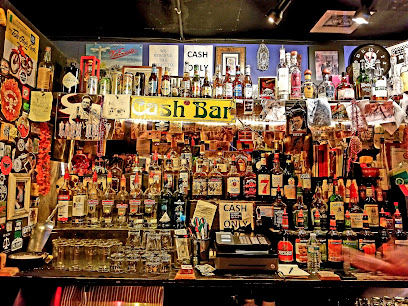
The Brakeroom - Santa Fe Brewing
Discover the vibrant craft beer scene at The Brakeroom, a top bar in Santa Fe offering local brews and live music in a cozy atmosphere.
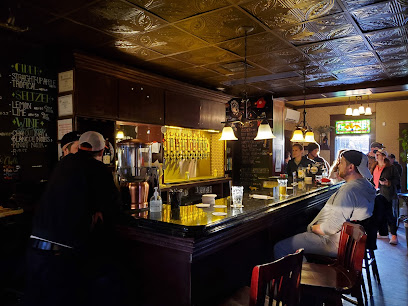
Tonic
Experience Tonic, a speakeasy-style cocktail bar in Santa Fe, where expertly crafted drinks and a cozy ambiance await.
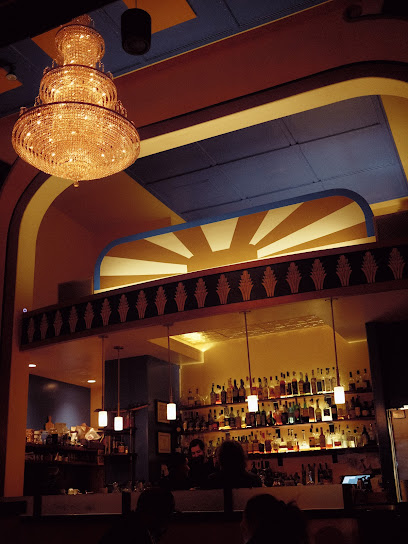
315 Restaurant & Wine Bar
Experience the finest modern French cuisine and an extensive wine selection at 315 Restaurant & Wine Bar in Santa Fe, NM.

Evangelo's
Experience the vibrant nightlife of Santa Fe at Evangelo's, a lively bar with affordable drinks and live music that captures the local spirit.
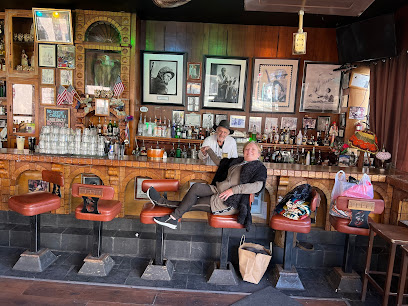
San Francisco Street Bar & Grill
Experience the vibrant flavors of Santa Fe at San Francisco Street Bar & Grill, where grilled delights and bistro charm meet in a lively setting.
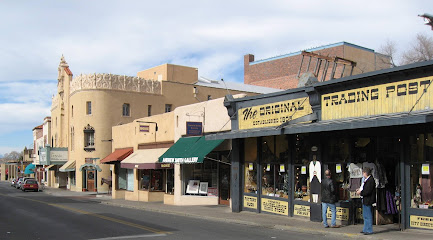
Secreto Lounge
Discover the elegance of Secreto Lounge, a premier bar in Santa Fe, NM, offering unique cocktails and a vibrant atmosphere for relaxation.
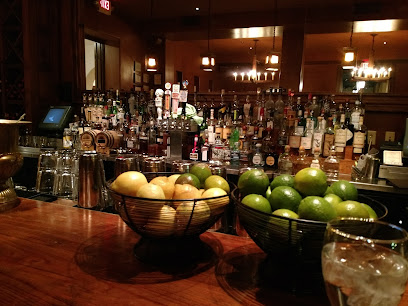
La Fiesta Lounge
Experience the vibrant spirit of Santa Fe at La Fiesta Lounge, where signature cocktails and live music create the perfect atmosphere for relaxation and fun.
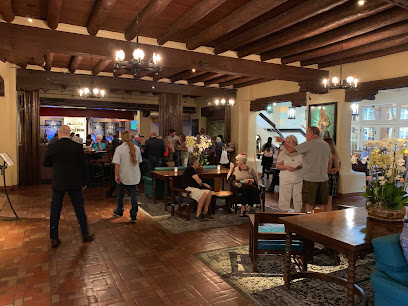
La Reina
Experience the vibrant nightlife of Santa Fe at La Reina, where craft cocktails and a lively atmosphere await you in a cozy lounge setting.
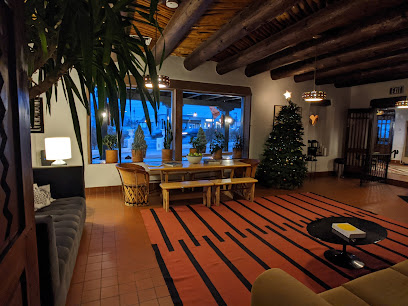
Low 'n Slow Featuring HAWT Pizza
Experience delicious pizzas and refreshing drinks in a laid-back atmosphere at Low 'n Slow Featuring HAWT Pizza in the heart of Santa Fe.
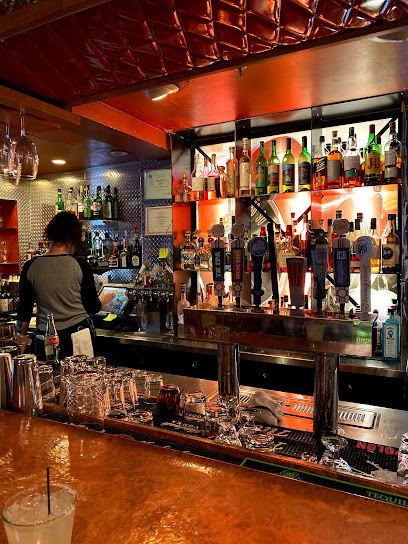
Local Phrases
-
- HelloHola
[oh-lah] - GoodbyeAdiós
[ah-dee-ohs] - YesSí
[see] - NoNo
[noh] - Please/You're welcomePor favor/De nada
[por fah-vor/deh nah-dah] - Thank youGracias
[grah-see-yas] - Excuse me/SorryPerdón/Lo siento
[pehr-dohn/loh see-ehn-toh] - How are you?¿Cómo estás?
[koh-moh ehs-tahs] - Fine. And you?Bien. ¿Y tú?
[byen. ee too] - Do you speak English?¿Hablas inglés?
[ah-blahs een-glehs] - I don't understandNo entiendo
[noh ehn-tee-ehn-doh]
- HelloHola
-
- I'd like to see the menu, pleaseMe gustaría ver el menú, por favor
[meh goo-stah-ree-ah behr ehl meh-noo, por fah-vor] - I don't eat meatNo como carne
[noh koh-moh kahr-neh] - Cheers!Salud!
[sah-lood] - I would like to pay, pleaseMe gustaría pagar, por favor
[meh goo-stah-ree-ah pah-gahr, por fah-vor]
- I'd like to see the menu, pleaseMe gustaría ver el menú, por favor
-
- Help!¡Ayuda!
[ah-yoo-dah] - Go away!¡Vete!
[veh-teh] - Call the Police!¡Llama a la policía!
[yah-mah ah lah poh-lee-see-ah] - Call a doctor!¡Llama a un médico!
[yah-mah ah oon meh-dee-koh] - I'm lostEstoy perdido
[ehs-toy pehr-dee-doh] - I'm illEstoy enfermo
[ehs-toy ehn-fehr-moh]
- Help!¡Ayuda!
-
- I'd like to buy...Me gustaría comprar...
[meh goo-stah-ree-ah kohm-prahr...] - I'm just lookingSólo estoy mirando
[soh-loh ehs-toy mee-rahn-doh] - How much is it?¿Cuánto cuesta?
[kwan-to kwehs-tah] - That's too expensiveEso es demasiado caro
[eh-soh ehs deh-mah-see-ah-doh kah-roh] - Can you lower the price?¿Puedes bajar el precio?
[pweh-dehs bah-hahr ehl pree-syoh]
- I'd like to buy...Me gustaría comprar...
-
- What time is it?¿Qué hora es?
[keh oh-rah ehs] - It's one o'clockEs la una en punto
[ehs lah oo-nah ehn poon-toh] - Half past (10)Las diez y media
[lahs dyehs ee meh-dee-ah] - MorningMañana
[mah-nyah-nah] - AfternoonTarde
[tahr-deh] - EveningNoche
[noh-cheh] - YesterdayAyer
[ah-yehr] - TodayHoy
[oy] - TomorrowMañana
[mah-nyah-nah] - 1Uno
[oo-noh] - 2Dos
[dohs] - 3Tres
[trehs] - 4Cuatro
[kwah-troh] - 5Cinco
[seen-koh] - 6Seis
[seys] - 7Siete
[syeh-teh] - 8Ocho
[oh-choh] - 9Nueve
[nweh-veh] - 10Diez
[dyehs]
- What time is it?¿Qué hora es?
-
- Where's a/the...?¿Dónde está...?
[dohn-deh ehs-tah] - What's the address?¿Cuál es la dirección?
[kwahl ehs lah dee-rehk-syohn] - Can you show me (on the map)?¿Puedes mostrarme (en el mapa)?
[pweh-dehs mohs-trar-meh (ehn ehl mah-pah)] - When's the next (bus)?¿Cuándo es el próximo (autobús)?
[kwan-doh ehs ehl proh-ksee-moh (ow-toh-boos)] - A ticket (to ....)Un boleto (a ....)
[oon boh-leh-toh (ah ....)]
- Where's a/the...?¿Dónde está...?
History of Sante Fe
-
Santa Fe, meaning 'Holy Faith' in Spanish, was founded by Spanish colonists in 1610, making it the oldest capital city in the United States. The city was established as the capital of the Nuevo México province, a part of the Viceroyalty of New Spain. The site was chosen by Don Pedro de Peralta, the third governor of the province, and it was intended to be a strategic and administrative center.
-
One of the most significant events in Santa Fe's history is the Pueblo Revolt of 1680. This uprising was led by a Tewa religious leader named Popé and involved various Puebloan peoples who rebelled against Spanish colonization and religious oppression. The revolt resulted in the expulsion of Spanish settlers and missionaries from Santa Fe and the surrounding regions for 12 years, until Spain reasserted control in 1692.
-
In 1692, Spanish Governor Diego de Vargas led the reconquest of Santa Fe, marking the end of the independence period initiated by the Pueblo Revolt. Vargas's return to Santa Fe was marked by a mixture of diplomacy and military force. He negotiated with various Pueblo leaders, promising more lenient and respectful treatment, although conflicts continued in subsequent years.
-
In 1821, Mexico gained independence from Spain, and Santa Fe became part of the newly established Mexican territory. This era saw increased trade and cultural exchange, particularly through the Santa Fe Trail, which connected Missouri to Santa Fe, allowing for the movement of goods and people between the United States and Mexico.
-
The Mexican-American War (1846-1848) resulted in the Treaty of Guadalupe Hidalgo, through which Mexico ceded a vast portion of its northern territories, including Santa Fe, to the United States. In 1850, Santa Fe was designated the capital of the newly created New Mexico Territory. The city became a focal point for American settlers and military presence.
-
The arrival of the Atchison, Topeka, and Santa Fe Railway in the late 19th century transformed Santa Fe's economy and accessibility. Although the main line bypassed the city, a branch line connected it to the national rail network, fostering tourism and commerce. This period also saw an influx of artists and writers, attracted by the region's unique culture and landscapes.
-
New Mexico achieved statehood in 1912, with Santa Fe continuing as the state capital. Throughout the 20th century, Santa Fe developed a reputation as a center for arts and culture, influenced by Native American, Hispanic, and Anglo-American traditions. Landmarks like the Palace of the Governors and the Loretto Chapel, along with annual events such as the Santa Fe Indian Market and the Fiestas de Santa Fe, highlight the city's diverse heritage.
Sante Fe Essentials
-
Santa Fe is accessible via the Santa Fe Regional Airport (SAF), which offers regional flights. For international and more extensive domestic flights, Albuquerque International Sunport (ABQ) is the nearest major airport, approximately 60 miles south of Santa Fe. From Albuquerque, you can rent a car, take a shuttle service, or use the Rail Runner Express train to reach Santa Fe. The journey by car or shuttle typically takes about an hour.
-
Santa Fe offers various transportation options. The city has a reliable public bus system operated by Santa Fe Trails, covering major attractions and neighborhoods. Taxis and rideshare services like Uber and Lyft are also available. For a more flexible option, consider renting a car, especially if you plan to explore the surrounding areas. Santa Fe is bike-friendly, with numerous bike paths and rental shops. Walking is another great way to explore the compact and historic downtown area.
-
The official currency is the US Dollar (USD). Credit and debit cards are widely accepted in hotels, restaurants, and shops. However, it is advisable to carry some cash for smaller establishments, local markets, and tips. ATMs are plentiful, especially in the downtown area and shopping centers.
-
Santa Fe is generally a safe city for tourists, but like any destination, it is important to take standard precautions. Areas with higher crime rates targeting tourists include parts of the Southside and some isolated spots in the Railyard District. Avoid walking alone at night in these areas and keep your belongings secure. Downtown and popular tourist areas are typically safe and well-patrolled by police.
-
In case of emergency, dial 911 for immediate assistance. Santa Fe has several medical facilities, including the Christus St. Vincent Regional Medical Center. Pharmacies are available throughout the city for minor health issues. It is highly recommended to have travel insurance that covers medical emergencies.
-
Fashion: Do dress in layers, as the weather can change rapidly. Casual wear is generally acceptable, but smart-casual attire is recommended for fine dining. Religion: Do respect local customs, especially when visiting religious sites like churches and missions. Public Transport: Do be courteous and offer your seat to the elderly or disabled. Don’t eat or drink on public buses. Greetings: Do greet people with a friendly 'hello' or a handshake. A smile goes a long way. Eating & Drinking: Do try local cuisine, such as New Mexican dishes with green or red chile. Don’t refuse hospitality; it's considered impolite.
-
To experience Santa Fe like a local, visit the Santa Fe Farmers Market in the Railyard District for fresh produce and handmade goods. Attend local events such as the Santa Fe Indian Market or the International Folk Art Market. Explore lesser-known neighborhoods like Canyon Road, renowned for its art galleries. For a unique experience, take a cooking class to learn about New Mexican cuisine. Engage with locals, who are often eager to share insights and stories about the city's rich history and culture.
Trending Landmark in Sante Fe
-
Loretto Chapel
-
Georgia O'Keeffe Museum
-
La Fonda on the Plaza
-
The Cathedral Basilica of St. Francis of Assisi
-
El Rancho de las Golondrinas
-
Cross of the Martyrs
-
San Miguel Chapel
-
New Mexico Museum of Art on the Plaza
-
Santa Fe Railyard Park
-
Sena Plaza
-
Cathedral Park
-
Oldest House Museum
-
History in Santa Fe Tour - Santa Fe Revisited
-
Inn of the Turquoise Bear
-
IAIA Museum of Contemporary Native Arts (MoCNA)
Nearby Cities to Sante Fe
-
Things To Do in Sante Fe
-
Things To Do in Los Alamos
-
Things To Do in Las Vegas
-
Things To Do in Bernalillo
-
Things To Do in Taos
-
Things To Do in Albuquerque
-
Things To Do in Alamosa
-
Things To Do in Pagosa Springs
-
Things To Do in Socorro
-
Things To Do in Trinidad
-
Things To Do in Farmington
-
Things To Do in Durango
-
Things To Do in Gallup
-
Things To Do in Ruidoso
-
Things To Do in Roswell













